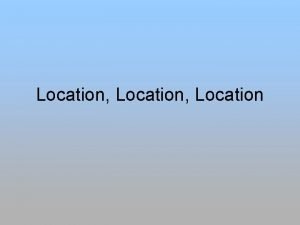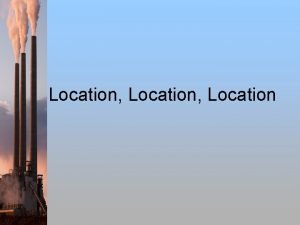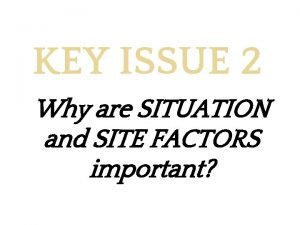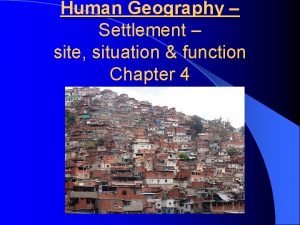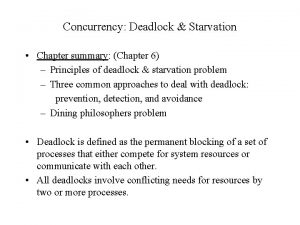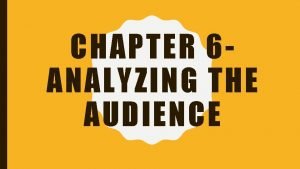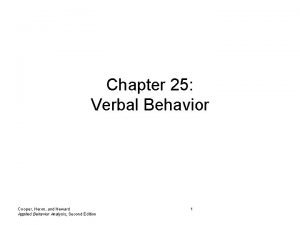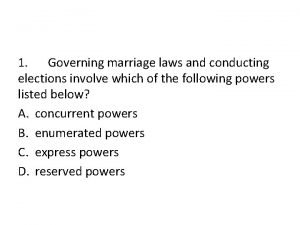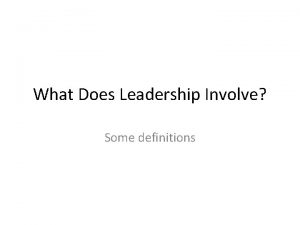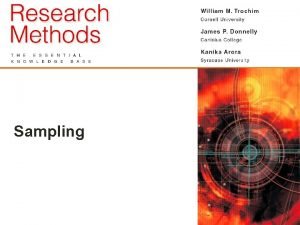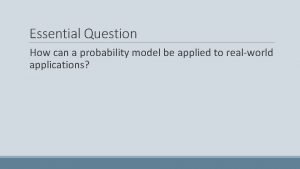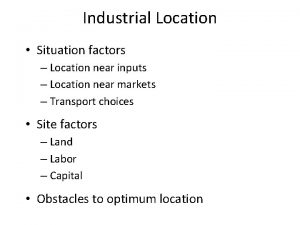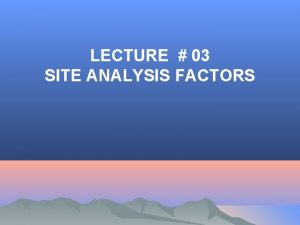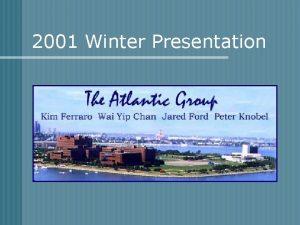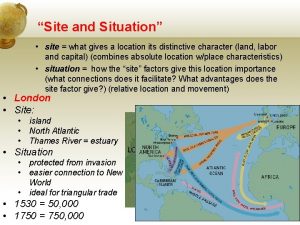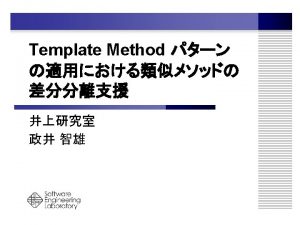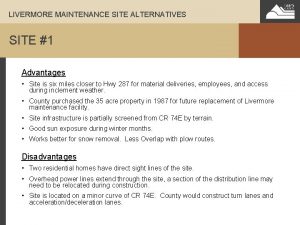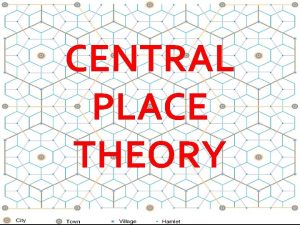Location Location Site vs Situation Situation factors involve




















- Slides: 20

Location, Location

Site vs. Situation • Situation factors: involve transporting materials to and from a factory – Minimize cost of transporting inputs to the factory & finished goods to the consumers • Site factors: related to the costs of factors of production inside the plant – Land, labor, capital

Situation factors

4 Basic Concepts of Spatial Interaction 1. Complementarity: There must be some form of Supply and Demand Caused by variations in world resources 2. Transferability: Factors = the Cost of moving a particular item and the ability of the item to bear the cost

Least Cost Theory • 1909 • Alfred Weber’s model – owners of manufacturing plants seek to minimize costs through: – 1) Transportation, and – 2) labor – 3) agglomeration

Least Cost Theory – Weight-losing case: • • final product weighs less than raw materials; location closer to source – Copper industry: • only 0. 7% of mined is copper, • rest is waste (gangue) • Then concentration process (crush, grind, mix, filter, dry) results are about 25% copper • Then smelting to reduce impurities

Least Cost Theory – Bulk-reducing industry (steel is too) – Where should the concentration plant be in relation to the mine and the customer?

Least Cost Theory • Soft drink bottling – – Empty cans or bottles Syrup concentrate Water =finished product • Bulk-gaining industry (fabricated metals – cars, refrigerators) • Where should the bottler be located in relation to the can manufacturer and the customer?

Least Cost Theory • What cost should be the “least” possible?

Perishable Products • Must locate near market • But not an issue of bulk-reducing or bulkgaining

Labor Intensive Industries • • • Textiles Jewelry Toys Sawmilling and planing Footwear

Energy Intensive Industries • • Aluminum Fertilizer Cement Pulp and paper

Footloose Industries • Micro-chips

Break-of-Bulk Points • The location where transfer among transportation modes is possible • Costs rise each time cargo has to be loaded and unloaded – Ship – Rail – Truck, or – Air

Site factors

Location Models Weber’s Model Manufacturing plants will locate where costs are Hotelling’s Model the least (least cost Location of an industry theory) cannot be understood Theory: without reference to other industries of the Least Cost Theory same kind. Costs: Transportation, Theory: Labor, Agglomeration Locational interdependence Losch’s Model Manufacturing plants choose locations where they can maximize profit. Theory: Zone of Profitability

Hotelling’s Model • Harold Hotelling (1895 -1973) • Locational Interdependence • Originally locate near customers – but will gravitate to each other to maximize profits • The costs for some customers will be greater if the 2 sellers cluster – further to walk. Also fewer customers aware of service. But can’t move for fear of losing customers.

Changing Markets • Outsourcing • New international division of labor – Moving industry to low-cost labor • Just-in-time Delivery • Post-Fordist system – more flexible, less mass produced (time-space compression) • deindustrialization

• High tech corridors – area designated by local or state government to benefit from lower taxes and higher technology infrastructure (Silicon Valley) • Technopole – area planned for high tech where agglomeration built on synergy among tech companies occur (from Dulles Airport – DC has AOL, MCI, Orbital Sciences)

• Formal economy • Informal economy
 Site vs situation
Site vs situation Site versus situation
Site versus situation Why are situation and site factors important
Why are situation and site factors important Hot site cold site warm site disaster recovery
Hot site cold site warm site disaster recovery Site vs. situation
Site vs. situation Geography site and situation
Geography site and situation Figure of speech of comparison
Figure of speech of comparison Routine request example
Routine request example Integrated deadlock strategy
Integrated deadlock strategy Audience centeredness
Audience centeredness Metonymical tact extension
Metonymical tact extension For the two processes shown which of the following is true
For the two processes shown which of the following is true Governing marriage laws and conducting elections
Governing marriage laws and conducting elections Leadership involves providing
Leadership involves providing Sampling procedure involve
Sampling procedure involve Ali ahmed is a mathematics professor who tries to involve
Ali ahmed is a mathematics professor who tries to involve Do these situations involve bernoulli trials
Do these situations involve bernoulli trials Colorimetry involve
Colorimetry involve Naspe standards
Naspe standards Prototyping involve compromises
Prototyping involve compromises Homotrophic effects for allosteric enzymes involve
Homotrophic effects for allosteric enzymes involve
